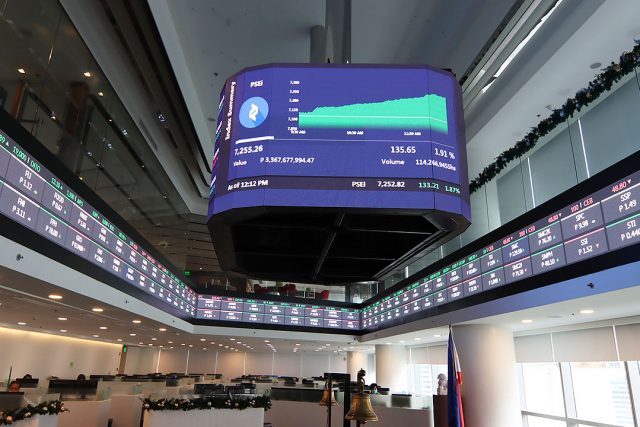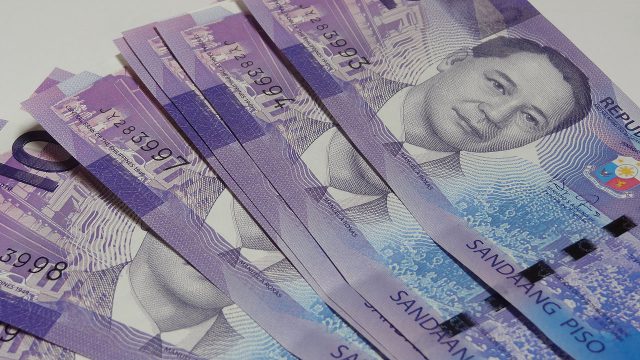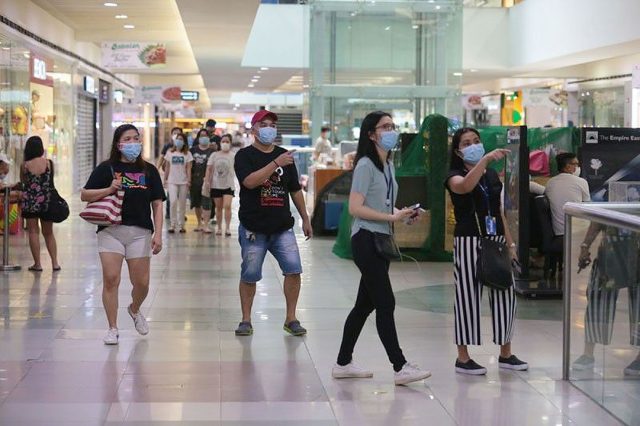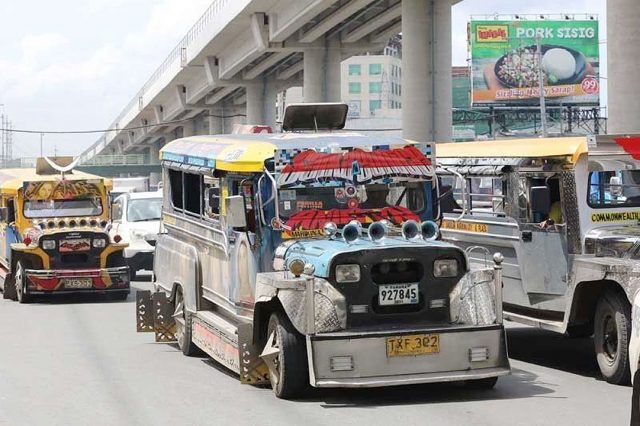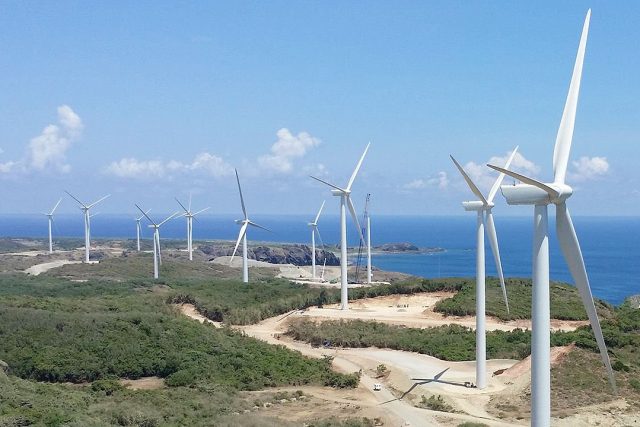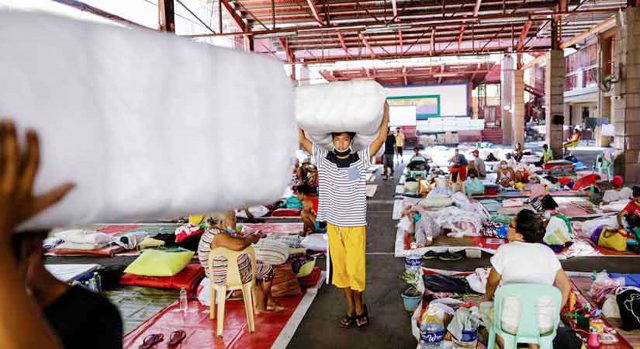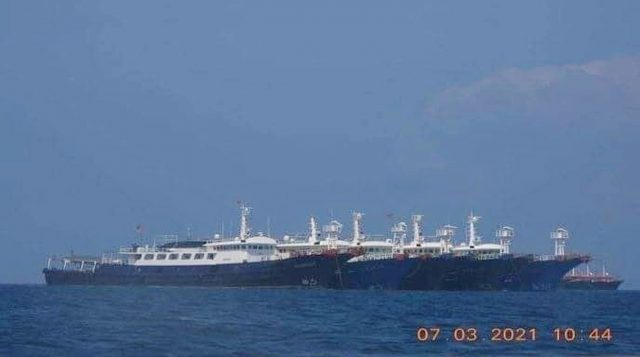PSEi rebounds as gov’t eases restrictions in NCR
SHARES surged on Thursday after the government’s pandemic task force eased mobility restrictions in the National Capital Region (NCR) amid a decline in coronavirus disease 2019 (COVID-19) cases.
The benchmark Philippine Stock Exchange index (PSEi) climbed 114.19 points or 1.61% to close at 7,183.11 on Thursday, while the broader all shares index went up by 40.69 points or 0.92% to 4,443.95.
This is the PSEi’s highest close since Jan. 21, 2021, when the 30-member index finished at 7,140.29.
“Market went on uptrend today after IATF (Inter-Agency Task Force) decided to ease restrictions by lowering to Alert Level 3 from Level 4 starting Oct. 16 to end this month as infection rates simmer down with NCR to start jabs on [the] general population including minors,” Diversified Securities, Inc. Equity Trader Aniceto K. Pangan said in a text message on Thursday.
“Also, most Asian markets were up on rebound after the US market rebounded last night,” he added.
“Investors bought back into the Philippines market as NCR eased its restriction to Alert Level 3, thus reopening the economy and stimulating more business activity,” Regina Capital Development Corp. Head of Sales Luis A. Limlingan said in a Viber message.
The government’s pandemic task force eased quarantine restrictions in Metro Manila, allowing movie theaters and amusement parks to open, until the end of the month.
“Overseas, investors digested the possibility of the central bank starting the tapering process by mid-November or mid-December, based on the minutes from FOMC’s (Federal Open Market Committee) September meeting,” Mr. Limlingan added.
The Federal Reserve signaled on Wednesday it could start reducing its crisis-era support for the US economy by the middle of next month, with a growing number of its policy makers worried that high inflation could persist longer than previously thought, Reuters reported.
All sectoral indices closed in the green on Thursday. Holding firms gained 158.21 points or 2.28% to 7,083.25; property went up by 65.03 points or 1.99% to 3,321.18; industrials climbed 187.88 points or 1.80% to finish at 10,604.52; services rose 11.44 points or 0.61% to 1,882.84; financials inched up by 5.61 points or 0.36% to 1,563.28; and mining and oil increased by 31.94 points or 0.30% to 10,509.80.
Value turnover decreased to P10.28 billion with 1.01 billion shares switching hands on Thursday, down from the P11.93 billion with 1.33 issues traded on Wednesday.
Advancers beat decliners, 111 versus 86, as 45 names closed unchanged.
Foreigners turned buyers anew, logging P191.09 million in net purchases on Thursday from the P219.72 million in net outflows seen the previous day. — K.C.G. Valmonte with Reuters
Peso rises as gov’t eases Metro Manila restrictions
THE PESO climbed versus the greenback on Thursday as the government relaxed mobility restrictions in the capital and following the release of data showing the country had ample dollar buffers as of end-September.
The local unit closed at P50.605 per dollar on Thursday, appreciating by five centavos its P50.655 finish on Wednesday, based on data from the Bankers Association of the Philippines.
The peso opened Thursday’s session stronger at P50.59 per dollar. It dropped to as low as P50.67, while its intraday best was at P50.525 versus the greenback.
Dollars traded declined to $936.65 million on Thursday from $1.105 billion on Wednesday.
The peso closed stronger on Thursday as Metro Manila was placed under Alert Level 3, a trader said.
Alert Level 3 will be imposed in Metro Manila from Oct. 16 to 31, presidential spokesperson Herminio L. Roque, Jr. said on Wednesday. Under this level, businesses will be allowed to operate at 30% indoor capacity and 50% for outdoors.
Data on the country’s gross international reserves (GIR) as of end-September also supported the peso, Rizal Commercial Banking Corp. Chief Economist Michael L. Ricafort said.
The country’s GIR stood at $107.156 billion as of end-September, slipping 0.74% from its $107.964-billion level as of end-August but 6.68% higher than the $100.443 billion logged a year earlier, the central bank reported on Wednesday.
The Bangko Sentral ng Pilipinas said the decrease in the GIR level from the previous month was due to the national government’s payment of its foreign debt obligations and the lower valuation of its gold holdings.
At the end-September level, the GIR can cover 10.8 months’ worth of imports of goods and payments of services and primary income. It is also enough to service about 7.6 times the country’s short-term external debt based on original maturity and 5.2 times based on residual maturity.
For Friday, Mr. Ricafort gave a forecast range of P50.50 to P50.70 per dollar, while the trader expects the local unit to move within P50.45 to P50.70. — L.W.T. Noble
DTI sees most NCR displaced workers resuming employment
MOST of the workers in Metro Manila who were displaced by the pandemic are expected to return to the workforce with the reopening of industry and the lowering of the region’s alert level, the Department of Trade and Industry (DTI) said.
It said the displaced workers number about 300,000. It gave no details on exactly how many of them will return.
“With most of the remaining economic sectors, particularly the service sector, to be reopened in Metro Manila, and at higher operating capacities because also of the de-escalation to Alert Level 3, we expect most of the balance (300,000) displaced workers to be back to work,” Trade Secretary Ramon M. Lopez said in a Viber message Thursday.
The government’s pandemic task force has given the green light for Alert Level 3 in Metro Manila between Oct. 16 and 31.
Alert Level 3 is the third-strictest community quarantine classification implemented in places with high coronavirus case counts, with high usage rates of hospital beds and intensive care units.
On Thursday, Mr. Lopez said entertainment and karaoke bars, amusement centers for children, and playgrounds will remain closed during the period, with a “minimal” number of workers — less than 100,000 — to be affected.
Asked to estimate the percentage of closed establishments during the new alert level, he replied: “(We) will need a new survey given these new reopenings, but the base case under GCQ (general community quarantine) before was about 4% closed.”
Last month, Mr. Lopez said he supports allowing most businesses to open regardless of alert level, limiting only their capacity levels when there is a rise in infections. He said this will promote business continuity and head off an “open-close-open” operating cycle. — Angelica Y. Yang
Legislator calls for return of cash-card transport subsidies
SENATOR Sherwin T. Gatchalian has urged the government to reactivate a fuel subsidy program to offset the impact of high fuel prices, which have been rising for seven consecutive weeks.
Under the “Pantawid Pasada” program, authorities distributed fuel cards to subsidize the public transportation sector.
“I am calling on the government to protect our public utility drivers and commuters. They can do this by reactivating the Pantawid Pasada where the government will absorb the rising rates of petroleum by providing subsidies to the public,” Mr. Gatchalian, who chairs his chamber’s senate energy committee, said in a statement Thursday.
He said the government needs to spend at least P914.16 million on a three-month subsidy for the 178,244 franchise holders of public utility jeepneys.
He also called on the Energy department to monitor the compliance of oil companies with their inventory requirements.
Under Executive Order 134 signed by President Gloria Macapagal-Arroyo, oil companies must retain a minimum inventory of petroleum products.
The Department of Energy (DoE) implemented the order through a department circular in 2003 which set a minimum inventory equivalent to 15 days’ worth of demand for petroleum products, and seven days’ worth of liquefied petroleum gas.
The DoE and Land Transportation Franchising and Regulatory Board are looking at implementing a fare hike and providing cash assistance to members of the transport industry to offset the impact of higher oil prices.
This week, oil companies raised gasoline prices by P1.30 per liter (/L) this week. Meanwhile, diesel and kerosene prices rose P1.50/L and P1.45/L, respectively.
The Organization of the Petroleum Exporting Countries in a meeting with Russia agreed to stick to a plan of gradually increasing oil output despite rising demand. — Angelica Y. Yang
High meat, poultry production costs blamed on corn tariffs
CORN TARIFFS are driving up the cost of producing livestock and poultry, putting the industry at a disadvantage relative to imports, the Philippine Association of Feed Millers, Inc. (PAFMI) said.
Citing a study by the National Economic and Development Authority (NEDA), the association said in a statement Thursday that over the last decade, the Philippines has paid high tariffs for corn imports, and estimated corn costs at up to $0.44 per kilogram (/kg).
It said comparable prices in China, Vietnam and Thailand are up to $0.38/kg, $0.29/kg and $0.24/kg, respectively.
“Corn is a major ingredient of feed for both swine and poultry, and the Philippines is unable to benefit from the low cost of imported corn owing to high corn tariffs,” PAFMI said, referring to the findings of Philippine Institute for Development Studies Research Fellow Roehlano M. Briones.
According to the NEDA report, pork production costs are P112.40 /kg, the highest among the countries covered. The report also noted that the feed cost for hogs was equivalent to P64/kg, compared to Thailand’s P54.54/kg.
The production cost per broiler chicken was P92.40/kg in the Philippines against the Vietnam cost of P56.04/kg. Feed in the Philippines accounted for 65% of broiler production cost, as opposed to 41% for Vietnam.
“(We) have been reiterating the need for government to review the current high tariff rates on corn at a time when global supply has been tight,” PAFMI said.
It said domestic corn production is “not enough,” and this has forced feed millers to import. According to PAFMI, 80% of domestic corn is taken up by livestock growers.
Yellow corn is a key raw material in animal feed. — Angelica Y. Yang
NGO says RE plants prone to fewer outages than coal-fired facilities
NON-GOVERNMENT organization (NGO) Institute for Climate and Sustainable Cities (ICSC) said Thursday that renewable energy (RE) facilities are more reliable than coal-run plants, citing data on outages from the wholesale electricity spot market.
In a virtual briefing, ICSC Energy Transition Advisor Alberto R. Dalusung III said solar, biomass and wind plants have historically registered fewer outage days compared to coal plants.
The claim was based on an analysis of spot market data collected between 2017 and mid-June 2021, which tallied 41 outage days a year for biomass plants, which are within the allowed level of outages set by the Energy Regulatory Commission (ERC).
The corresponding numbers for solar plants and wind facilities were 13 days each over the same period.
Mr. Dalusung noted that the unavailability rates and duration of outages for biomass, solar and wind power plants are “significantly lower than that of coal plants.”
Meanwhile, coal-fired plants experienced up to 74 outage days a year, he said. This translates to “high unavailability rates” while “historically failing” to hit the ERC’s prescribed outage limits.
“Coal power plants are not reliable. They exceed ERC thresholds every year. On the other hand, RE power plants are reliable… (and) are not intermittent,” Mr. Dalusung said.
In August, coal accounted for more than half of 54.3% of the power generation mix. Renewables, on the other hand, comprised around 23%. — Angelica Y. Yang
Most ASEAN small businesses hit 50% digitization rate
SMALL BUSINESSES in Southeast Asia, particularly those furthest along in their digital transformations, have expressed an openness to pursue further digitalization to aid in their economies’ recovery, according to a study.
The study, ASEAN Digital Generation Report published this month by Sea Ltd. and the World Economic Forum (WEF), found that 74% of micro-, small-, and medium-sized enterprises (MSMEs) have digitalized at least half of their tasks.
The survey too in responses from 86,000 business owners across the region, with 77% of respondents aged 16 to 35.
“We wanted to understand the views, priorities, and concerns of the digital users in ASEAN and gain statistical insights that will help inform and shape relevant regional policy,” said Joo-Ok Lee, WEF’s head of regional agenda in the Asia-Pacific, at the virtual launch of the report Wednesday.
Of the Philippine respondents, 63% said that digitalization is important for economic recovery, followed by those from Malaysia (60%) and Vietnam (60%).
The study found that an inclusive and sustainable digital transformation will hinge on improving the quality and affordability of infrastructure, upskilling the workforce, and enhancing trust in the digital environment.
In the Philippines, nearly 50% of respondents identified self-discipline as the most important skill post-pandemic, the highest in ASEAN. The next two skills named were ability to use technology (32%), and resilience and adaptability (32%).
La Hieu Hue, a businesswoman from Vietnam, where respondents identified the same top three skills as the Philippines, said at the launch: “In this crisis, many businesses found that we needed these skills to start embracing digital transformation and digital tools right away, to adapt.”
The survey confirmed as well the role of e-commerce as a key driver of growth in the region despite reduced income for MSMEs, according to Santitarn Sathirathai, group chief economist of Sea Ltd.
“One of the key findings was that digitalization has a ‘flywheel’ effect wherein users who had first experienced the benefits of technology were more eager to deepen their levels of digitalization,” he said. “On that note, it is critical for the public and private sectors to work even more closely to minimize any friction and barriers which may prevent the positive digitalization momentum from taking place.”
Adding momentum to the process is the transfer of needed skills from young people to older generations, he added. The report found that 36% of respondents taught others how to use digital tools during the pandemic. — Brontë H. Lacsamana
PEZA planning for more ecozones in Mindanao
THE Philippine Economic Zone Authority (PEZA) said it is looking at developing additional ecozones in 18 areas in Mindanao.
In a Thursday briefing, PEZA Director General Charito B. Plaza said these new ecozones will focus on agriculture, agro-forestry, bio-energy and fishing.
The proposed zones will be located in Bukidnon, Agusan del Norte, Davao City, Sulu, Sultan Kudarat, Surigao del Sur, Misamis Oriental, Lanao del Norte, Davao del Norte, North Cotabato, Zamboanga del Norte, Zamboanga del Sur, Zamboanga Sibugay, Agusan del Sur, Basilan, Tawi Tawi, Lanao del Sur and Maguindanao.
“These are areas rich in agriculture, aquaculture (and) agroforestry,” Ms. Plaza said.
She said the investment promotion agency is also looking at setting up a refining ecozone in one of the proposed areas.
She added that the new ecozones are an opportunity to develop special areas dedicated to halal food production.
“(Doing this) could boost the country’s bid for a share of the world’s halal market, estimated at more than $3 trillion. This will also benefit the domestic market in (developing) halal-certified products.” She estimated the part of the population patronizing halal food at over 10 million.
According to Ms. Plaza, the development of more ecozones in the countryside will attract more investment, create jobs and develop millions of hectares of idle land.
Ms. Plaza has urged local government units in Mindanao, national agencies and Congress to file resolutions asking President Rodrigo R. Duterte to declare idle public land in the south as suitable for development into special economic zones.
As of February 2021, there were 37 ecozones in Mindanao, with 15 operating as information technology parks. — Angelica Y. Yang
Palace justifies plan to reopen movie houses amid pandemic
THE PRESIDENTIAL palace on Thursday defended a plan to let movie houses in Manila, the capital and nearby cities reopen amid a coronavirus pandemic.
The plight of film workers should be considered, presidential spokesman Herminio L. Roque, Jr. told a televised news briefing.
Former pandemic task force adviser Anthony C. Leachon earlier said letting cinema operations resume was “very risky” and could put Metro Manila at a higher risk from the coronavirus.
“Theaters are indoors, can involve being near crowds and may be poorly ventilated,” he tweeted.
Movie theaters will be allowed to operate at a 30% capacity once the National Capital Region shifts to Alert Level 3 on Oct. 16.
Safety measures are in place to prevent the spread of the coronavirus disease 2019 (COVID-19) virus inside movie houses, Mr. Roque said.
“First, moviegoers shall be vaccinated,” he said. “Second, 30% capacity will be observed. No person will be allowed to sit side-by-side.”
The Department of Health (DoH) had released guidelines mandating proper ventilation and air purifying systems in cinemas, Mr. Roque said.
He added that the decision was timely since most of the residents in Metro Manila have been fully vaccinated against the coronavirus.
About 50.97 million coronavirus vaccines had been given out as of Oct. 13. Almost 24 million 30.8% of adult Filipinos have been fully vaccinated.
“For as long as the minimum health public standards are followed, we can give it a try, then monitor if there’s going to be an unusual increase of cases if and when the cinemas are opened,” Health Secretary Francisco T. Duque III told the ABS-CBN News Channel.
DoH reported 7,835 coronavirus infections on Thursday, bringing the total to 2.7 million. The death toll rose to 40,221 after 154 more patients died, while recoveries increased by 5,317 to 2.57 million, it said in a bulletin.
There were 84,850 active cases, 77.2% of which were mild, 10.6% did not show symptoms, 3.6% were severe, 7.01% were moderate and 1.5% were critical.
The agency said 58 duplicates had been removed from the tally, 42 of which were reclassified as recoveries and two as deaths while 89 recoveries were reclassified as deaths. Four laboratories failed to submit data on Oct. 12.
Meanwhile Mr. Duque said he had not been consulted about a government decision to scrap the quarantine requirement for fully vaccinated travelers from low-risk countries.
“I’ve always supported a facility quarantine for at least five days, then test, then you continue at home,” said Mr. Duque, who was at a Senate hearing when an inter-agency task force made the decision.
“Apparently, the Inter-Agency Task Force went through the process and they approved this and what we can do now is to strictly monitor this,” he said.
Mr. Duque said pandemic officials were set to meet on Thursday to discuss the decision and other pandemic matters. “We’ll see how this is going to turn out because we have some issues to raise.”
Mr. Roque said the task force was set to update the so-called green list of countries considered safe for travel.
American Samoa, Burkina Faso, Cameroon, Cayman Islands, Chad, China (mainland), Comoros, Republic of the Congo, Djibouti, Falkland Islands (Malvinas), Hungary, Madagascar, Mali, Federated States of Micronesia, Montserrat, New Zealand are on the green list.
Niger, Northern Mariana Islands, Palau, Poland, Saba (Special Municipality of the Kingdom of Netherlands), Saint Pierre, Sierra Leone, Sint Eustatius, Taiwan, Algeria, Bhutan, Cook Islands, Eritrea, Kiribati, are also on the list.
The list of low-risk countries also includes Marshall Islands, Nauru, Nicaragua, Niue, North Korea, Saint Helena, Samoa, Solomon Islands, Sudan, Syria, Tajikistan, Tanzania, Tokelau, Tonga, Turkmenistan, Tuvalu, Vanuatu, Uzbekistan and Yemen. — Kyle Aristophere T. Atienza
Philippines gets five Black Hawk helicopters from US, retires 10 Huey choppers

THE PHILIPPINES has taken delivery of five Black Hawk helicopters from the United States as part of efforts to replace its fleet of Vietnam War-era Huey helicopters, according to the Department of Defense.
The agency got the choppers during ceremonies at the Clark Air Base in Pampanga province on Oct. 13, during which 10 Huey helicopters were decommissioned, it said in a Facebook post.
President Rodrigo R. Duterte had approved the acquisition of more Polish-built Black Hawk helicopters to address helicopter lift deficiency, Cabinet Secretary Karlo Alexei B. Nograles said in February.
The latest batch of Black Hawk helicopters arrived more than three months after a C-130 plane of the military crashed, killing 50 people.
The July 4 accident happened two weeks after a Black Hawk helicopter carrying six soldiers crashed during a night-flying exercise in Tarlac province.
The US Embassy in Manila also said the US had delivered four units of ScanEagle unmanned aerial system to the Philippine Air Force.
The P200-million security system would boost the Southeast Asian nation’s unmanned intelligence, surveillance and reconnaissance, it said in a separate statement.
It would also be used for counterterrorism, humanitarian assistance and disaster relief efforts, it added.
“We remain committed to our promises on helping modernize the Armed Forces of the Philippines, and we hope this will further strengthen our combined capabilities in working together towards a free and open Indo-Pacific,” Chargé d’Affaires, ad interim Heather Variava said in the statement.
The Southeast Asian country already had 16 S-70i Black Hawks on order, with the first five delivered in Nov. 2020. These were ordered under a $241-million contract signed between the two governments in 2019, according to Defense News.
The helicopters are made by Poland’s PZL Mielec, a unit of Lockheed Martin, which also owns Sikorsky, the original manufacturer of the Black Hawk.
Acquiring more Black Hawks would allow the Philippines to retire its fleet of Bell UH-1 Huey helicopters, a design that dates back to the 1960s and that has suffered from a spate of crashes and accidents, the defense news website said. — Kyle Aristophere T. Atienza
Robredo says she won’t push oil exploration deals with China
VICE-PRESIDENT Maria Leonor “Leni” G. Robredo on Thursday vowed not to pursue oil exploration deals with China if she becomes president until it recognizes a 2016 United Nations-backed arbitral ruling that invalidated its claim to more than 80% of the South China Sea.
The Philippines would limit deals with its neighbor to trade and investment, she told an online forum on Thursday.
Ms. Robredo cited the need for an inclusive and independent foreign policy “as opposed to one that favors certain countries.” “We will be open to working with everyone so long as it will be in the best interests of the Filipino people.”
President Rodrigo R. Duterte, whose six-year term ends next year, led a foreign policy pivot toward China and away from the Philippines’ western allies.
Manila Mayor Francisco “Isko” M. Domagoso, who is also running for president, on Wednesday said he would consider joint oil explorations with China. Profits from any oil found should be used to lower electricity prices and boost the Philippines’ sea assets, he told an online forum.
Former Senator Ferdinand “Bongbong” R. Marcos, Jr., another presidential contender, “appears one of the few candidates to agree with Duterte’s policy of engagement with Beijing, potentially offering the most policy continuity out of the announced candidates,” according to Fitch Solutions Country Risk and Industry Research.
Last month, the son of the late dictator Ferdinand E. Marcos said Mr. Duterte’s stance on the South China Sea dispute is “the right way to go.”
Fitch Solutions noted in its report earlier this week that boxing champion and Senator Emmanuel “Manny” D. Pacquiao, another presidential bet, would probably seek closer ties with the US. It expects Ms. Robredo to “take a tougher stance on the Philippines’ dispute with China.”
Meanwhile, Senator Panfilo M. Lacson said the Philippines under him would boost ties with foreign military powers to enforce the landmark arbitral ruling that favored the Southeast Asian nation in the sea dispute with China.
“We can’t settle without becoming pushovers,” he told a separate online forum in mixed English and Filipino. He added that more powerful countries are willing to help the Philippines keep the balance of power in the disputed sea. — Kyle Aristophere T. Atienza and Nicole Alyssa O. Tan




